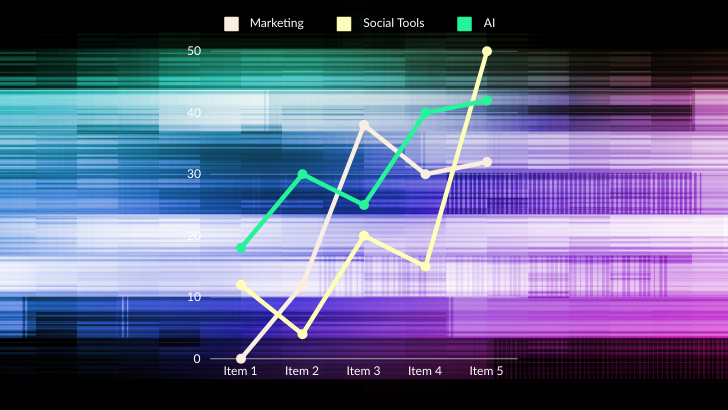Web applications are the new desktop
With web browser-accessed applications reaching record levels, employees are now spending most of their productive work time inside a cavern of business web applications. These may be custom applications built by a company for specific business purposes, or commercial SaaS applications for important functions such as collaboration, workflow management, scheduling, communication, transactional business, single sign-on, development, service desk, CRM, HR, and others.
Conversely, the employee use of traditional installed-on-device applications is waning rapidly. Today, the former desktop “killer app” – Microsoft Office – is now Office 365 with comprehensive web-browser access and interaction.
Yet, even with all the advancements we have monitoring physical device and installed applications, web applications remain a “black box” to IT.
There are some questions that IT teams struggle to answer:
- Are employees using unapproved web applications without your knowledge?
- Are existing licensed web-applications needed and being productively used?
- Are they being used efficiently?
- Can employees access the applications when needed?
- Are the applications performing as required?
Stop Over-Provisioning & Letting your SaaS Apps “Sprawl”
Virtualization technologies are a popular choice for many IT teams because they make for a quick, easy, and relatively inexpensive way to rapidly provision shared environments for employees and applications. A side effect, however, is the idea of “virtual server sprawl,” or wasted virtual and physical resources.
Obviously, server sprawl is not ideal for reducing IT’s environmental impact or for saving budget.
Web applications (commercial & in-house) can be just as quick and easy to provision as virtualization tech, but they also have a negative knock-on effect on the environment.
Why?
Even if web and commercial SaaS applications are cloud-hosted, they still draw excessive energy resources from physical servers, storage, and network infrastructure.
And this is where IT plays an important role. If you over-provision application resources, even in the cloud, that decision will have a negative knock-on effect for the environment.
It’s imperative then that IT teams right-size their application environments in the cloud so they don’t pass unnecessary energy stress onto the next company or data center operator.
Over-provisioning your web application licenses leads to over-provisioning for physical resources – just somewhere else.
Yes, providers have tuned and optimized their platforms to maximize efficiencies. But at the end of the day, if multiple companies each over-provision their licenses, the application provider still must retain sufficient physical infrastructure capacity for peak demand scenarios, which inevitably leads to waste (and higher costs that are passed onto customers).
And it’s not just over-provisioning of licenses. If IT can’t accurately identify how many employees are using their web applications, or whether they’re using non-approved tools, they are essentially leaning into, not reducing, their carbon footprint.
Relying on application providers to optimize their energy consumption on your behalf isn’t enough.
Companies, and their employees, must each do their part. Everyone involved needs to be held accountable and empowered.
And here’s how you can do that:
Take Inventory of Your Current Web Infrastructure
Your first step is to take inventory of all web application domains that are used by your employees. Then ensure they are only using those that are approved or acceptable under company policies. An astounding 80% of workers admit to using unapproved SaaS applications. It is critical to uncover Shadow IT activity (which addresses potential security and compliance issues) and helps inform prioritization of appropriate employee adoption and use of business approved and funded SaaS applications. It also ensures that cloud hosting environments are not unnecessarily provisioned.
IT can deploy web application tools that can provide a comprehensive list of all employee-visited web domains as an excellent starting point.
Baseline and Manage Your Ideal Employee Web Usage
Determine appropriate rates of adoption and use of SaaS applications for the business. Then continuously measure actual employee adoption and use for the appropriate measurement timeframe for each application’s use case.
For example, it’s normal for most employees to use your expense application only when they have something to report, so, non-daily usage for months on end could be normal. But, if your production warehouse order fulfillment application isn’t being used continuously, by the appropriate employees, raises a potential red flag to the business.
After the appropriate period (for each application), evaluate how actual employee usage maps to productivity needs and license counts. For example, if you have 100 sales reps and only 57 are using Salesforce, over a period of many weeks, there is likely an opportunity for efficiency gains, not to mention aligning licensing costs to actual usage requirements to save money.
Proactively Ensure Your Web Apps Are Available
If SaaS applications are unavailable to a group of employees having a common issue unrelated to the SaaS application itself, e.g., a browser version mismatch, they may open a (or lots of) ticket(s) flooding IT support – or – they might suffer in silence (link to the study). In each case, they are not only unproductive, but they are highly likely to get up and walk away (leaving their device to happily consume wasted electricity while they wait and de-stress).
IT needs the ability to continuously measure each employee’s experience of SaaS application availability in order to rapidly solve issues while they are nascent and before they negatively impact large numbers of employees.
Measure The Right Web App Performance Metrics
It’s not enough for applications to be available when employees need them, they also must perform well (slow is the new down). While SaaS application vendors give IT teams global views of service availability and performance, they offer no insight into individual employee experience. IT and the SaaS vendor might show the application is “in the green”, while employees are experiencing extremely poor responsiveness.
There is a huge cost to poor SaaS application performance – employees will be miserable (and unproductive) and will spend more time using their devices to catch up later – wasting electricity.
Ensure Your Web Experience Matches an Amazing Employee Experience
An optimal employee experience is only possible when employees have:
- Flawless access to the needed applications where and when needed
- Flawless availability of all application related infrastructure – whether physical virtual, or cloud
- Always appropriate application performance when in use
IT Can Win the Trifecta!
As global companies accelerate in their efforts to make all aspects of their business as environmentally friendly as possible, they necessarily are involving their IT teams who are at the forefront of implementing the technology associated with digital transformation. And increasingly, digital transformation means the rapid adoption and use of web applications, especially SaaS applications.
As always overprovisioning is wasteful, and wasteful is never good environmental stewardship.
Environmentally and socially conscious employees are happy employees, and happy employees are productive. Why would any IT team not want to win the trifecta? By optimizing environmental stewardship, delighting employees, all while improving productivity across the business!
___
This post was originally published on the Nexthink blog.




